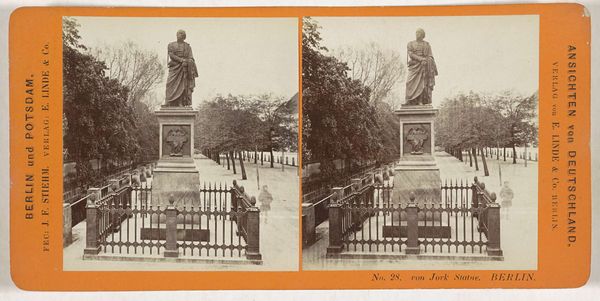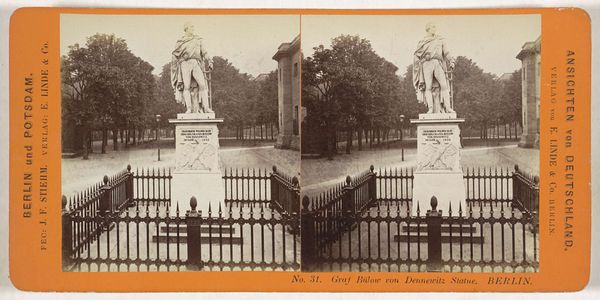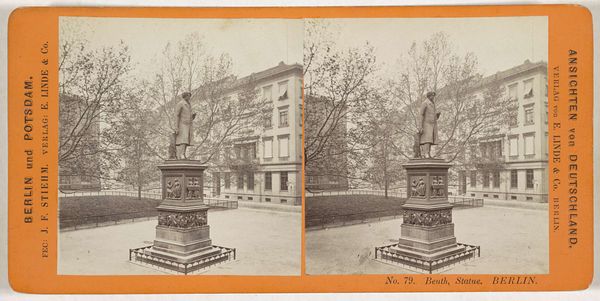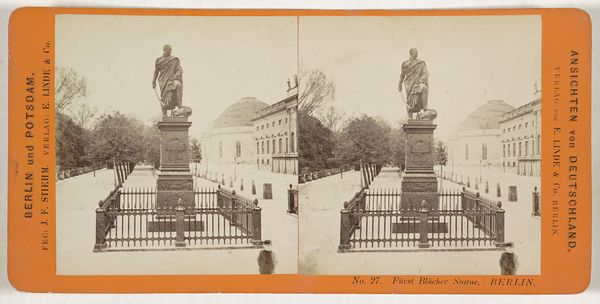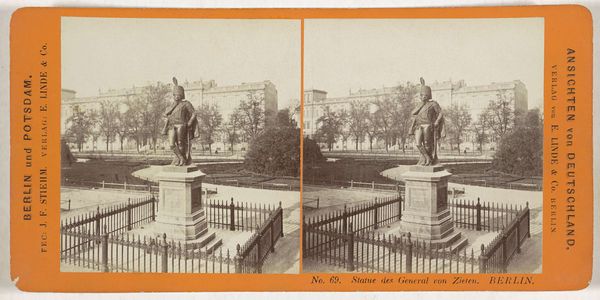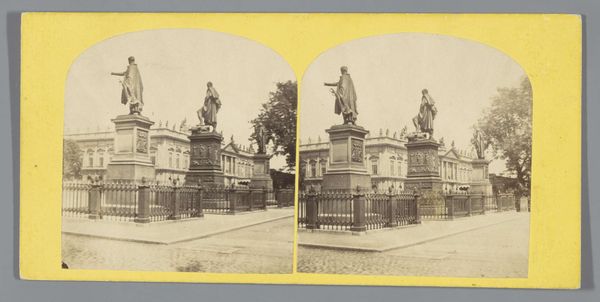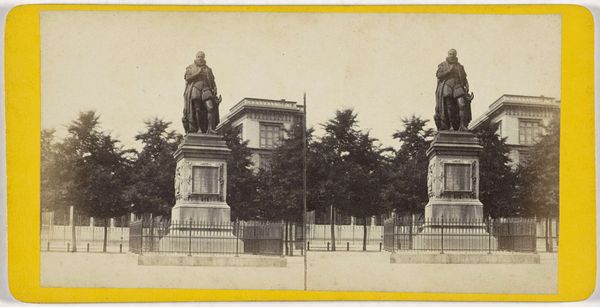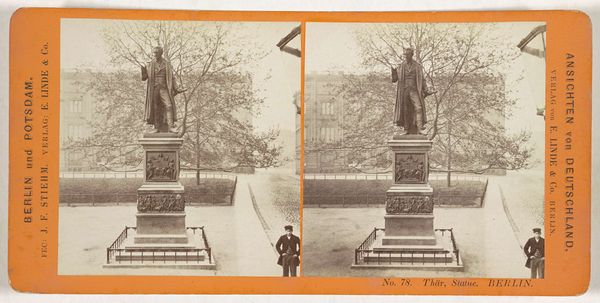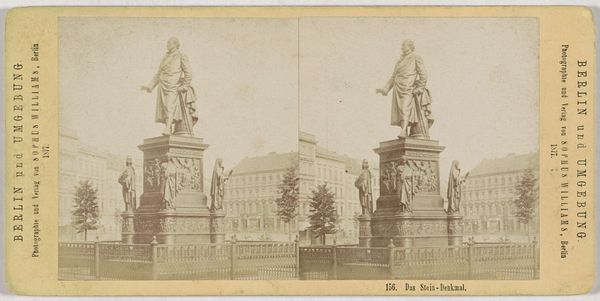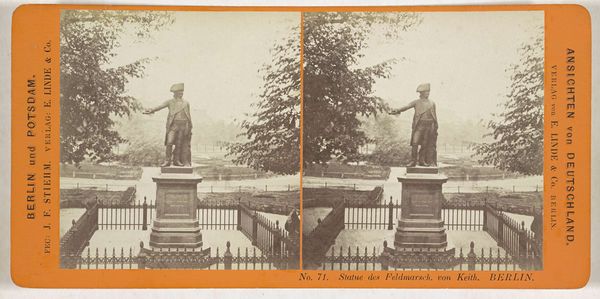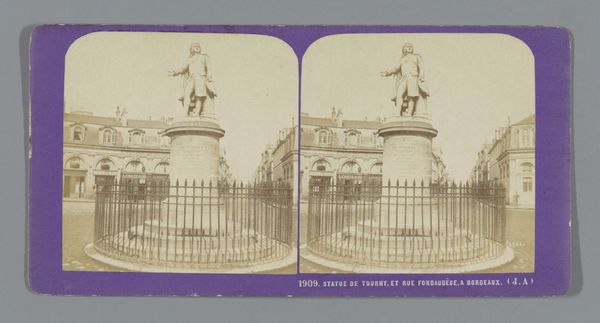
Standbeeld van August Neidhardt von Gneisenau, Unter den Linden, Berlijn 1868 - 1870
0:00
0:00
Dimensions: height 86 mm, width 176 mm
Copyright: Rijks Museum: Open Domain
Editor: This photograph, taken by Johann Friedrich Stiehm between 1868 and 1870, depicts a bronze statue of August Neidhardt von Gneisenau in Berlin. The composition is quite formal, almost neoclassical in its rigidity. What historical context shaped the creation and placement of this monument? Curator: It's essential to consider the political climate of the late 19th century. Gneisenau was a Prussian field marshal, a hero of the Napoleonic Wars. Monuments like this weren’t just about commemorating individuals; they were powerful tools in shaping national identity and solidifying political power, especially in the newly unified German Empire. How does the statue's location on Unter den Linden contribute to this understanding? Editor: Well, Unter den Linden was a major avenue in Berlin, so placing the statue there would guarantee maximum visibility and reinforce this image of Prussian strength and military prowess. Was there any resistance to this type of public art at the time? Curator: Absolutely. While these monuments were designed to inspire national pride, they also served as visual reminders of a particular political ideology, one often tied to militarism and the ruling elite. Consider who *isn't* represented. What voices are being silenced by these monumental pronouncements? Do you see echoes of this today in contemporary debates around public monuments? Editor: That’s a great point. Thinking about it that way, I can definitely see parallels to contemporary debates about monuments and their place in shaping public memory. It's not just about the person being honored but also about who is doing the honoring and why. Curator: Exactly. It prompts us to interrogate the power dynamics inherent in public art and question whose stories are being privileged and perpetuated. Editor: This has really shifted my perspective. I now see the statue less as a simple depiction of a historical figure and more as a complex statement about power, identity, and the ongoing struggle to control the narrative of history. Curator: And that's the beauty of engaging with art from an intersectional perspective. We begin to unravel the layered meanings embedded within the seemingly static surfaces.
Comments
No comments
Be the first to comment and join the conversation on the ultimate creative platform.
